Birds in West Java play an important role in the local ecology and culture of the region. As one of the most biodiverse regions of Indonesia, West Java is home to a variety of bird species, ranging from endemic birds to migratory species.
This variety of birds not only provides a source of food for the local people but also creates a unique and vibrant atmosphere. West Java is also known for being a great spot for birdwatching, as many of the species are easily spotted in the local parks and forests.
Whether you’re looking to observe the birds in their natural habitat or learn more about their unique features, West Java is a great place to start.
1. Brown-throated Barbet
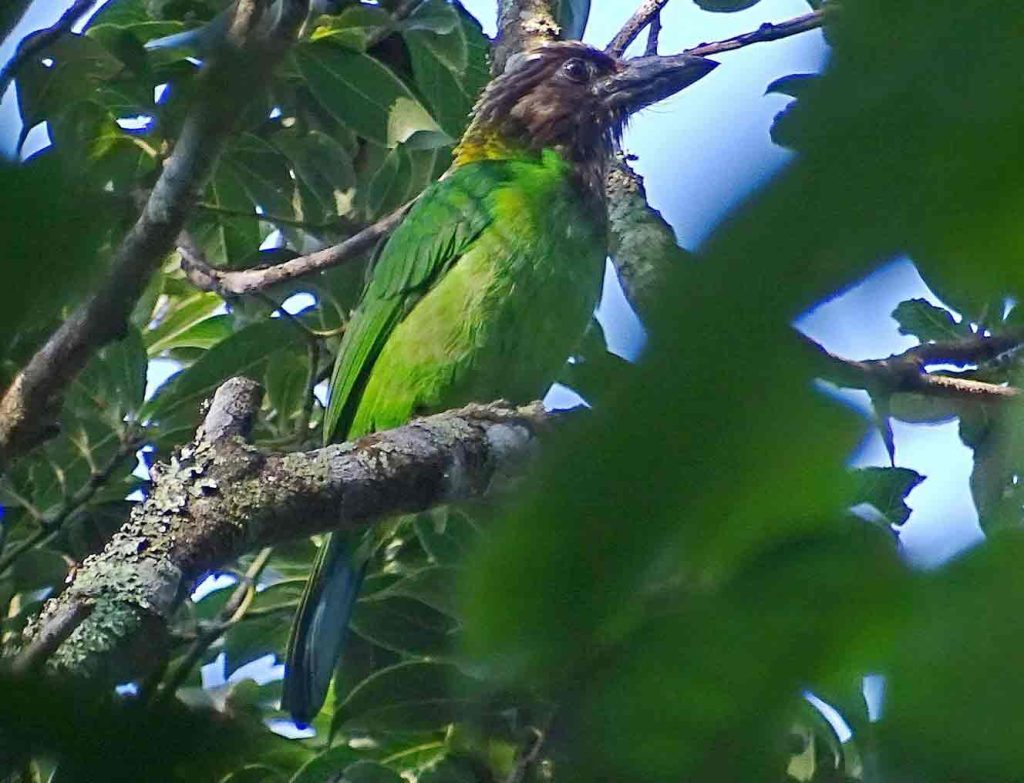
Source: https://ebird.org/
The brown-throated barbet is a species of bird belonging to the family Megalaimidae. It is native to western Java and is not found anywhere else in the world. This species is adapted to living in moist forested areas, both in lowland and mountainous areas.
It has adapted to life in such habitats as subtropical or tropical moist lowland forests and subtropical or tropical moist montane forests. These habitats provide the barbet with plenty of food and shelter, allowing them to live and breed successfully.
They also provide protection from predators, allowing the barbet to live a safe and healthy life. The brown-throated barbet is an important species for maintaining the natural balance of the ecosystems in which it lives.
| Kingdom | Animalia |
| Phylum | Chordata |
| Class | Aves |
| Order | Piciformes |
| Family | Megalaimidae |
| Genus | Psilopogon |
| Species | P. corvinus |
2. Rufous-tailed Fantail
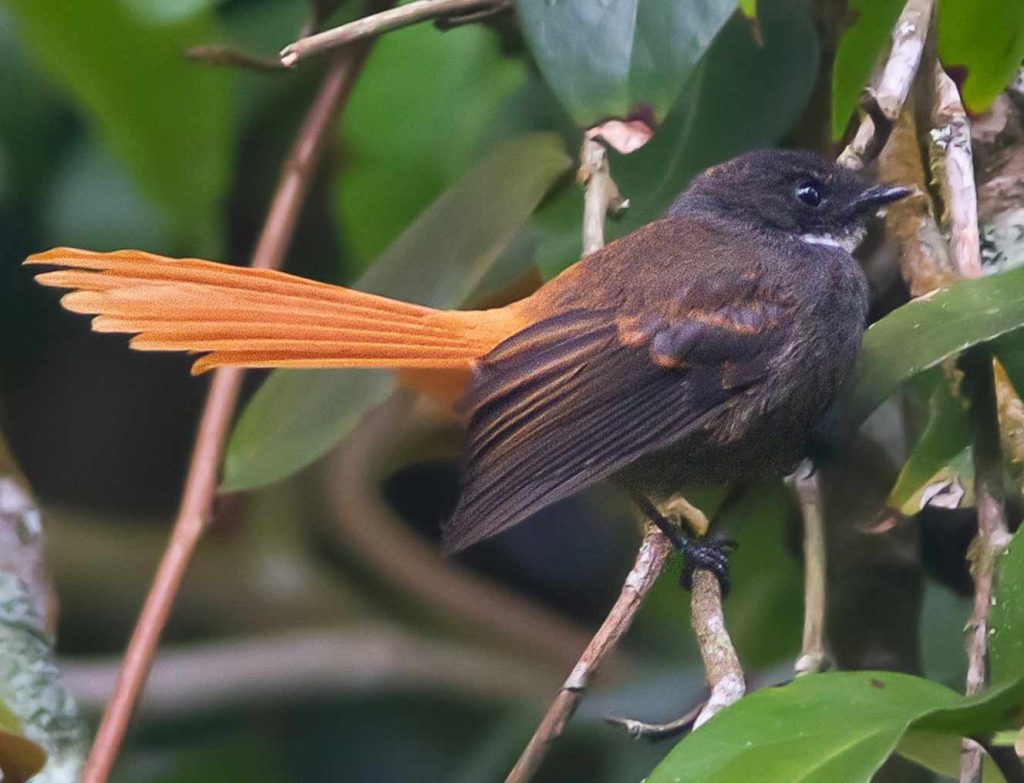
Source: ebird.org
The rufous-tailed fantail is a unique species of bird that is only found in the forests of Java, Indonesia. It belongs to the Rhipiduridae family and is known for its distinction of having a reddish-brown tail.
This species of bird is adapted to living in humid, mountainous climates which is why it is endemic to Java’s tropical montane forests. The rufous-tailed fantail is a remarkable bird that is able to survive in the unique environment of Java’s moist montane forests.
This species of bird is a vital part of the local ecosystem, and as a result, efforts are being made to protect its habitat. Conservationists are working hard to ensure that the rufous-tailed fantail has a safe and healthy environment to thrive in for years to come.
| Kingdom | Animalia |
| Phylum | Chordata |
| Class | Aves |
| Order | Passeriformes |
| Family | Rhipiduridae |
| Genus | Rhipidura |
| Species | R. phoenicura |
3. Snowy-browed Flycatcher
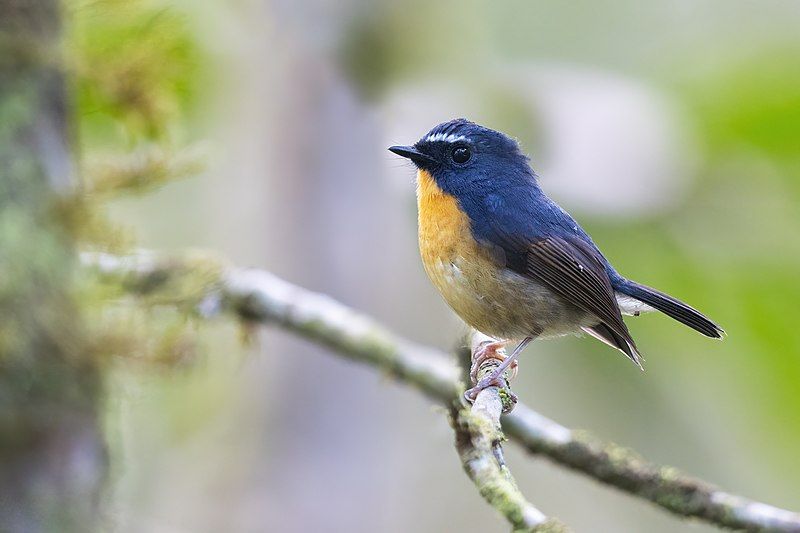
The snowy-browed flycatcher is a species of bird belonging to the Muscicapidae family. It is native to South and Southeast Asia, where it can be found in a variety of habitats.
This species of bird is found in Bangladesh, Bhutan, Cambodia, China, India, Indonesia, Laos, Malaysia, Myanmar, Nepal, the Philippines, Taiwan, Thailand, and Vietnam.
These countries are home to a variety of different bird species, and the snowy-browed flycatcher is no exception. The snowy-browed flycatcher is a small bird measuring between 11 to 12 centimeters in length.
It is primarily greyish-brown in color, with a white supercilium (eyebrow) and a blackish-brown crown. The wings and tail are also dark brown, with a faint buffy patch on the outer tail feathers.
It is a solitary bird, though it can sometimes be seen in small groups, foraging for insects and other small invertebrates. The snowy-browed flycatcher is a fairly common species, although its population is believed to be declining due to habitat loss and other human activities.
It is also vulnerable to predation by larger birds, such as hawks and eagles. For this reason, conservation efforts are underway to ensure that this species is able to survive and thrive in its natural surroundings.
| Kingdom | Animalia |
| Phylum | Chordata |
| Class | Aves |
| Order | Passeriformes |
| Family | Muscicapidae |
| Genus | Ficedula |
| Species | F. hyperythra |
4. Javan Tesia
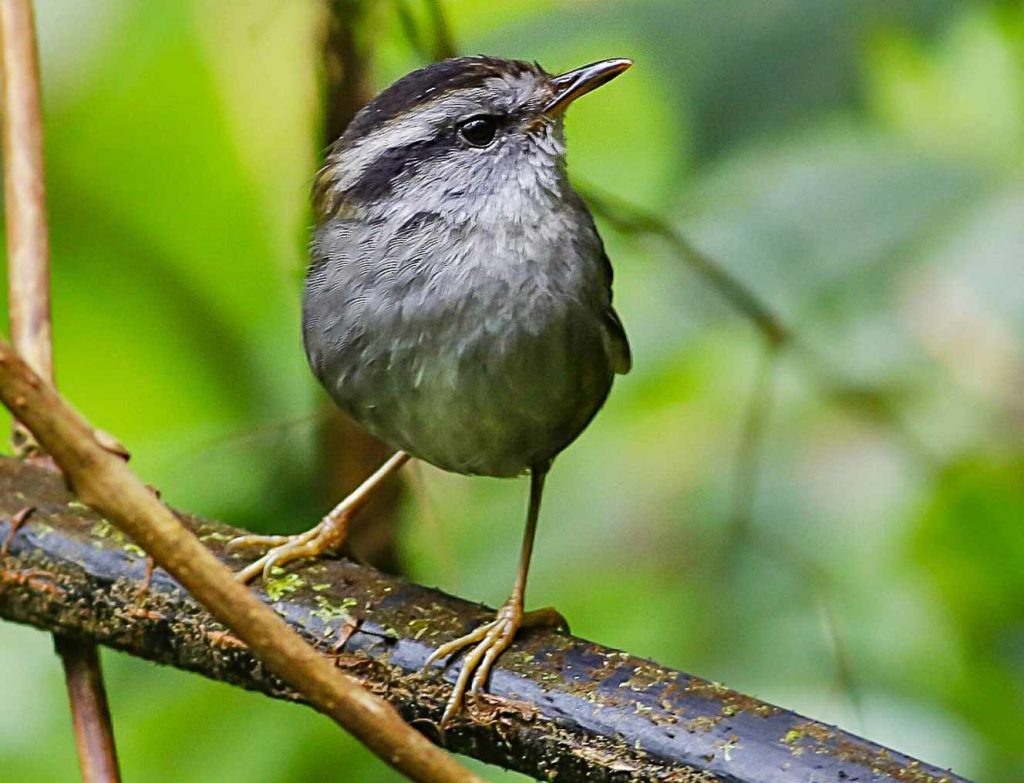
Source: ebird.org
The Javan Tesia is a species of Old World warbler that is found only on the island of Java, Indonesia. It belongs to the family Cettiidae, which includes a wide variety of Old World warblers.
This species is a small bird with a body length of around 13 cm and a wingspan of around 19 cm. It has long legs and a very short tail, making it instantly recognizable. The Javan Tesia feeds primarily on insects found in the undergrowth of broadleaf forests.
It is an omnivore, meaning it will also feed on fruit, berries, and other plant matter. Its diet is supplemented with small insects like ants, beetles, and larvae. It forages in the forest for food, often hopping from branch to branch in search of prey.
The Javan Tesia is a solitary bird, typically seen alone or in pairs. It is an elusive species and is not often seen outside of its preferred habitat. It is a territorial bird, and can often be heard singing from the tops of trees.
It is found mainly in tropical and subtropical regions of Java, where it inhabits the canopy of the forest. The Javan tesia is classified as Least Concern by the International Union for Conservation of Nature (IUCN).
This species is not considered to be under any threat, and its population is believed to be stable.
| Kingdom | Animalia |
| Phylum | Chordata |
| Class | Aves |
| Order | Passeriformes |
| Family | Cettiidae |
| Genus | Tesia |
| Species | T. superciliaris |
5. Spotted Crocias
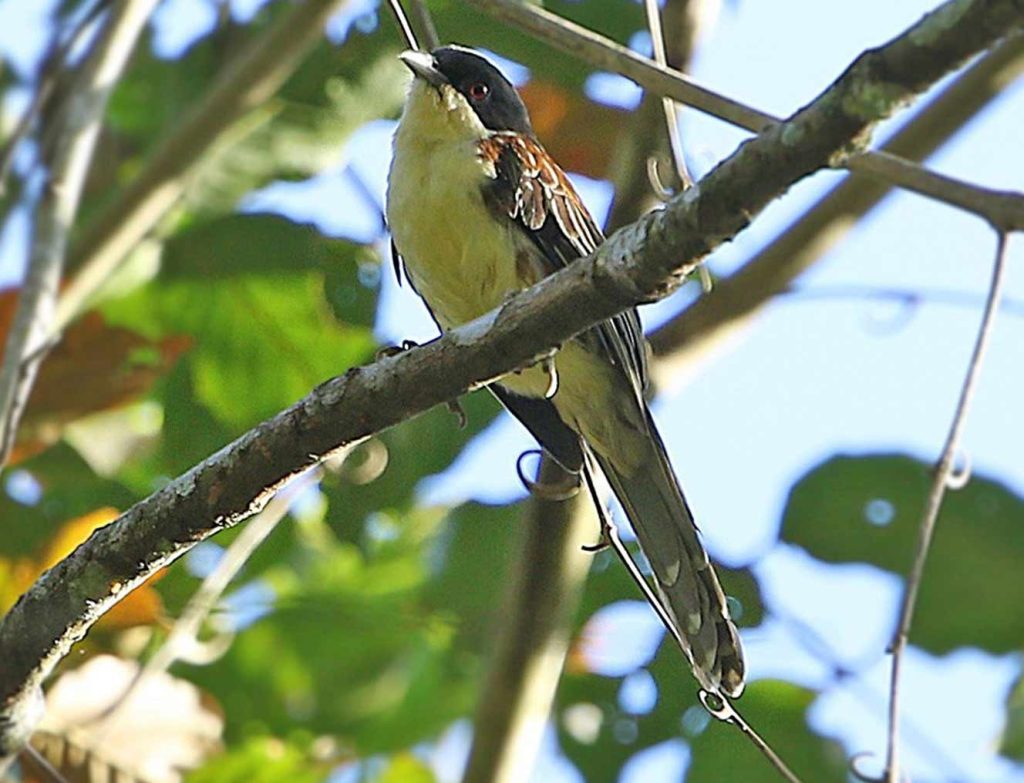
Source: ebird.org
The spotted Crocias is an avian species that belongs to the Leiothrichidae family, a group of passerine birds. Native to the island of Java in Indonesia, the spotted Crocias is a species that is limited to the western region of Java and cannot be found anywhere else.
This species of bird can be identified by its unique spotted pattern, which is why it gets its name. It is important to note that the spotted crocias is an endemic bird species, meaning that it is only found in a certain region and nowhere else.
The spotted crocias play a pivotal role in the local ecosystem, helping to maintain the natural balance by providing food resources for other animals and pollinating plants.
The presence of this species also serves as an indicator of a healthy environment, as their presence is indicative of a healthy and stable environment.
This species of bird is also important to the local culture and is considered to be a symbol of luck, with many locals believing that the presence of the spotted crocias brings good fortune.
Due to its limited geographic distribution, the spotted crocias is facing a number of threats. The loss of habitat due to deforestation is the greatest threat, as this species requires certain conditions to survive.
In addition, the introduction of invasive species to its habitat can also pose a threat, as these invasive species can compete with the spotted crocias for resources.
Given the precarious situation that the spotted crocias is facing, it is important that local and global efforts are taken to ensure its survival.
Conservation efforts such as habitat protection and restoration, as well as the implementation of sustainable land-use practices, are essential in preserving the spotted crocias and its habitat.
It is also important to raise awareness about this species, as this could help to protect it and ensure its survival.
| Kingdom | Animalia |
| Phylum | Chordata |
| Class | Aves |
| Order | Passeriformes |
| Family | Leiothrichidae |
| Genus | Laniellus |
| Species | L. albonotatus |
6. Javan Plover
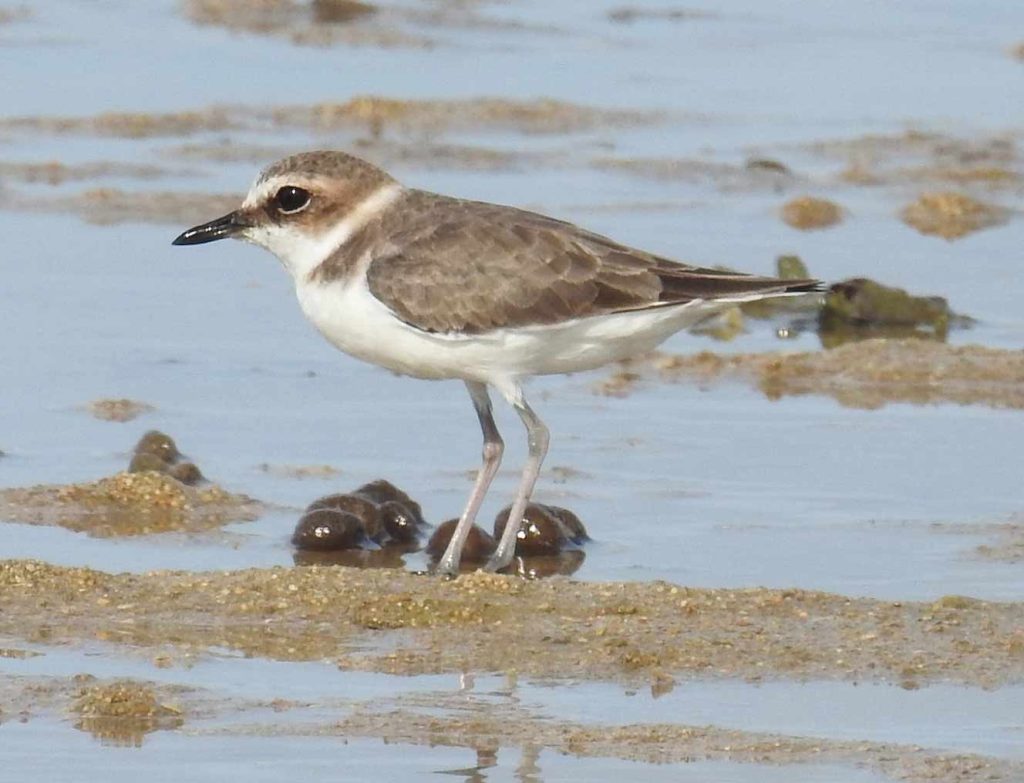
The Javan plover is a species of bird belonging to the family Charadriidae. It is native to Indonesia, where it makes its home on sandy beaches and intertidal mudflats. Unfortunately, the species is in danger of losing its habitat due to human activities.
Despite this, the Javan plover remains listed as Least Concern on the IUCN Red List, meaning that it is considered to be a species of low conservation concern. The Javan plover is a small bird, measuring between 20 and 23 cm in length.
Its upperparts are grey, while its underparts are white with a grey wash on the breast. Its legs and bill are black and it has a distinctive white patch on its forehead.
The Javan plover has a wide range in the Indonesian archipelago, including the islands of Java, Bali, and Sulawesi. The Javan plover is most commonly found in areas of sandy shoreline and intertidal mudflats.
It forages for crustaceans, mollusks, and other small invertebrates found in the mud. It is also known to feed on small insects, worms, and other small invertebrates. The Javan plover breeds during the wet season, building its nest in a shallow depression in the sand.
Unfortunately, the Javan Plover is threatened by a number of human activities, including urban development, coastal reclamation, and tourism. These activities can destroy its habitat, leaving the species without a suitable place to breed.
As a result, the species is now considered to be at risk of extinction. Despite this, the Javan plover is still listed as the least concern on the IUCN Red List, meaning that it is not considered to be a species of high conservation concern.
The Javan plover is an important species in its native Indonesia, and its conservation is essential for maintaining healthy coastal ecosystems.
Fortunately, a number of conservation efforts are underway to protect the species, including habitat restoration and awareness campaigns. With the help of these programs, we can ensure that the Javan Plover and its unique habitat remain safe for generations to come.
| Kingdom | Animalia |
| Phylum | Chordata |
| Class | Aves |
| Order | Charadriiformes |
| Family | Charadriidae |
| Genus | Charadrius |
| Species | C. javanicus |
7. Pied Shrike-Babbler
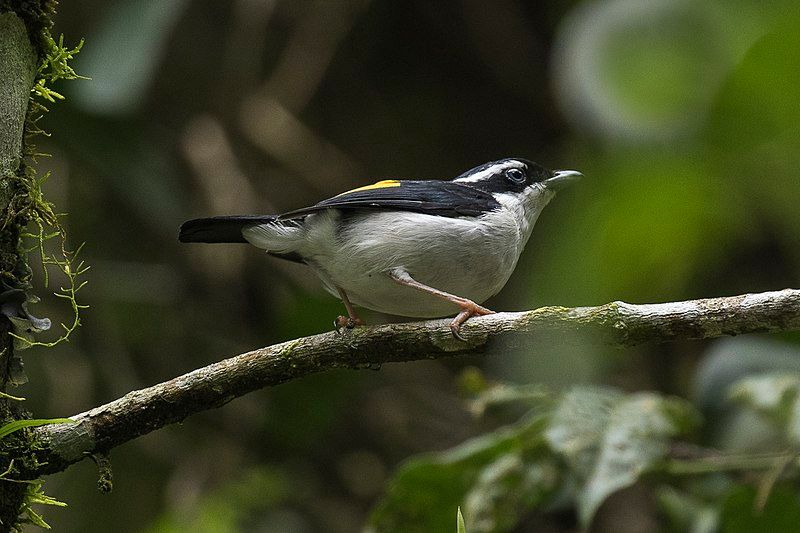
The pied shrike-babbler is a species of bird that has been traditionally placed in the family Timaliidae, which is part of the Old World babbler family.
However, recent research has suggested that this bird species actually belongs to an Asian offshoot of the American vireos, and may be better placed in the Vireonidae family. This means that the bird is more closely related to the American vireos than to the Old World babblers.
This is an interesting finding, as it shows that the pied shrike-babbler is not just an aberrant member of the Old World babbler family, but is actually part of a distinct branch of the American vireos.
This new information provides a more accurate picture of the bird’s evolutionary history and its relationship to other species.
| Kingdom | Animalia |
| Phylum | Chordata |
| Class | Aves |
| Order | Passeriformes |
| Family | Vireonidae |
| Genus | Pteruthius |
| Species | P. flaviscapis |
8. Javan Trogon
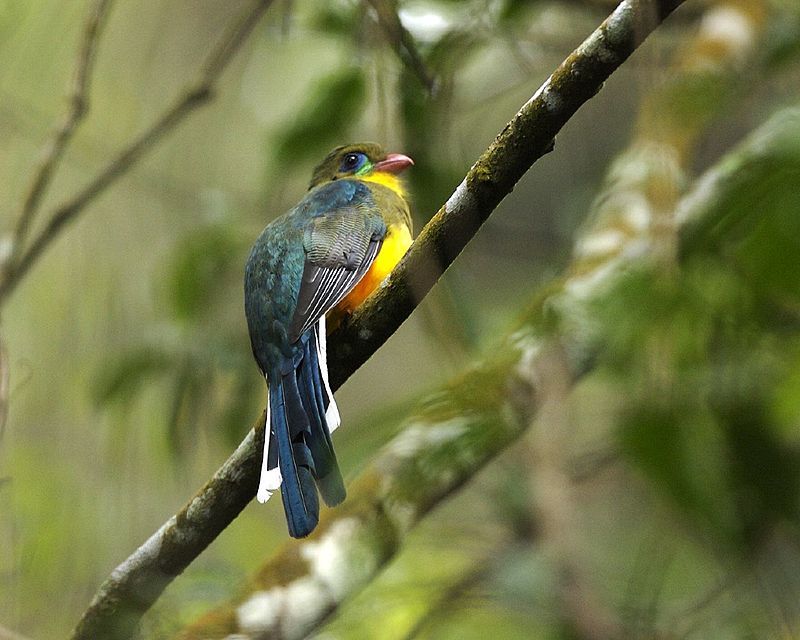
The Javan trogon is a bird that belongs to the family Trogonidae. It is native to the island of Java in Indonesia. Until recently, this species of bird was often confused with the Sumatran trogon and was referred to as the blue-tailed trogon.
However, researchers have recently noticed a difference in size, weight, and plumage between the two species, which has led them to recognize the Javan trogon as a separate species.
This discovery has enabled scientists to better understand the Javan trogon and its unique characteristics. The Javan trogon is a medium-sized bird, with a length of about 35 cm and a weight of around 100g.
It is a colorful bird, with its back and wings being blue and its tail and belly yellowish-green. The bird also has black feathers on its head, neck, and chest.
The Javan trogon has a rounded wingspan, a short tail, and an orange-colored beak. The main difference between the Javan trogon and the Sumatran trogon is its size and weight. The Javan trogon is slightly smaller than the Sumatran trogon and has a lighter weight.
Additionally, the plumage of the Javan trogon is more vivid and colorful than that of the Sumatran trogon.
The Sumatran trogon has a darker blue back and wings, and the feathers on its head and chest are more brownish. The discovery of the differences between the Javan trogon and the Sumatran trogon has allowed scientists to better understand the two species.
This knowledge can be used to help protect the birds from extinction and to learn more about their behavior and habitat.
By recognizing the Javan trogon as a separate species, researchers are able to gain more insight into the unique qualities of this species of bird and ensure its survival.
| Kingdom | Animalia |
| Phylum | Chordata |
| Class | Aves |
| Order | Trogoniformes |
| Family | Trogonidae |
| Genus | Apalharpactes |
| Species | A. reinwardtii |
Conclusion
West Java is a great place for bird watchers. It is home to a variety of unique and interesting species, from the endemic Javan Green Magpie to the more widespread White-breasted Waterhen.
The diversity of birds in the area provides hours of enjoyment for birders of all levels. With its many protected areas, West Java is an important area for bird conservation and a great place to observe and appreciate the beauty of birds.